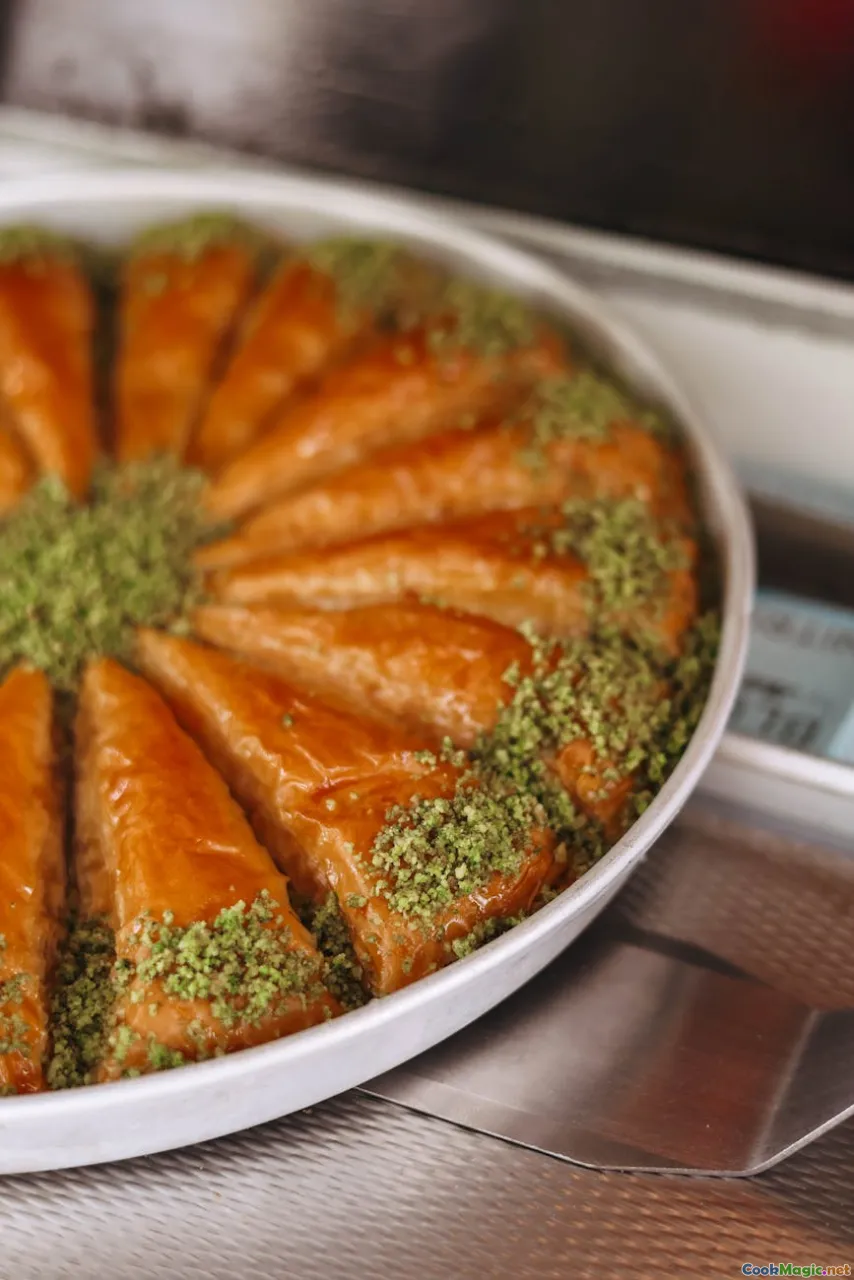The Secret to Crisp and Flaky Borek Pastry
8 min read Discover the timeless secrets behind achieving irresistibly crisp and flaky Borek pastry, blending tradition with culinary craftsmanship for authentic Turkish flavor. June 06, 2025 21:00
The Secret to Crisp and Flaky Borek Pastry
Imagine walking into a bustling Turkish bazaar at dawn, the air thick with the aroma of freshly baked pastries, warm spices, and the faint scent of sesame seeds. Among the myriad of delights, Borek stands out—a golden, flaky marvel that embodies centuries of culinary tradition. Its delicate layers, crispy exterior, and tender fillings evoke comfort and celebration in every bite. Yet, behind this seemingly simple pastry lies a masterful technique that transforms basic ingredients into a culinary masterpiece. Today, we delve into the secrets behind achieving that perfect crisp and flaky Borek pastry, unraveling techniques passed down through generations and blending artisanal skill with a touch of culinary magic.
The Cultural and Historical Significance of Borek
Borek, with its roots deeply embedded in Ottoman cuisine, is a testament to the rich tapestry of Turkish culinary history. Originating from the broader Middle Eastern and Balkan regions, Borek has evolved into countless regional variations—from the savory cheese-filled versions to sweet, nut-studded delights. Its significance goes beyond flavor; it embodies communal gatherings, festive celebrations, and daily sustenance.
In Turkey, Borek symbolizes hospitality and tradition. Whether served at a family breakfast table or during special occasions like Ramazan iftar, its flaky layers echo stories of shared memories and cultural pride. Each region boasts unique techniques and fillings—highlighting how craftsmanship varies but the pursuit of perfection remains universal.
The Anatomy of Perfect Borek Pastry
Achieving that coveted crispness and flakiness hinges on understanding the fundamental components:
- Dough: Thin, well-rested, and pliable.
- Fat: Butter, clarified butter (kaymak), or a blend, providing flavor and structural integrity.
- Filling: Cheese, spinach, potatoes, or minced meat—though the filling is secondary to the pastry’s texture.
- Baking Technique: Proper temperature and timing.
Each element must harmonize to produce the ideal flaky layers that crackle delightfully with each bite.
The Key to Flaky, Crisp Borek: Mastering the Dough
1. The Art of Phyllo or Yufka
Traditional Borek is often made with yufka, a thin, unleavened dough similar to phyllo but thicker and more pliable. Mastering yufka is crucial. It requires patience, a steady hand, and a gentle touch.
2. The Secret Ingredient: The Right Flour
Use high-quality, strong flour with a higher gluten content. This provides elasticity, allowing the dough to stretch without tearing. Some bakers even mix a small amount of semolina for added texture.
3. Resting the Dough
Resting is non-negotiable. After kneading, wrap the dough in a damp cloth and let it rest for at least 30 minutes—preferably an hour. Rest relaxes gluten strands, making the dough easier to roll thin.
4. Rolling Technique
Using a wooden or marble surface, roll the dough as thin as possible—almost translucent. Light, even strokes prevent tearing. The goal is to create layers of thin, delicate sheets that will puff up during baking.
The Role of Fat: Building Flakiness and Flavor
1. Butter vs. Clarified Butter
Butter imparts flavor and helps in creating crisp layers. Clarified butter (kaymak) has a higher smoke point and a purer fat content, making it ideal for brushing between layers.
2. Layering with Fat
Brush each sheet generously with melted butter or clarified butter before stacking. This ensures that during baking, steam creates the separation of layers, resulting in the signature flakiness.
3. The Technique of Laminating
Similar to puff pastry, layering fat between thin sheets of dough creates multiple layers. This lamination process—applying fat and folding—can be simplified by careful brushing and stacking.
Assembling and Baking: From Kitchen to Oven
1. Filling and Rolling
Place your filling evenly along one edge of the dough sheet. Roll gently but firmly, sealing the edges to prevent filling leakage.
2. Shaping the Borek
Whether you prefer a spiral, rectangular, or layered sigara style, shape it carefully. For a crispy, golden finish, brush the top with more butter or egg wash.
3. Baking Conditions
Preheat the oven to a high temperature—around 200°C (392°F). Bake until the Borek turns a deep, golden brown, about 20-30 minutes. The high heat ensures rapid puffing and crisping.
4. The Finishing Touch
Rest the baked Borek for a few minutes to allow residual steam to settle. Serve hot, with a side of thick yogurt or a wedge of fresh lemon—traditional accompaniments that elevate the experience.
Personal Insights and Anecdotes
As a food writer and passionate home baker, I’ve learned that patience and respect for tradition are vital. I recall the first time I attempted making Borek from scratch, battling with sticky dough and delicate layers. It was only after several attempts—adjusting flour types, resting times, and brushing techniques—that I achieved that perfect flaky texture. The aroma filling my kitchen, the crispy bites, and the pride that swelled with every compliment from friends made every effort worthwhile.
In Turkey, I’ve watched seasoned bakers stretch dough with a flick of their wrists, a skill honed over years. Their secret isn’t just in technique but in the love infused into each layer—a reminder that great food is as much about passion as process.
Final Thoughts: Embracing the Art
Mastering the art of Borek’s crisp, flaky pastry is a culinary journey rooted in patience, precision, and cultural reverence. The next time you prepare Borek, remember that each layer tells a story—of tradition, of craftsmanship, and of the timeless joy of sharing good food.
Whether enjoyed as a humble breakfast or a festive centerpiece, the secret lies in respecting the process and valuing the delicate balance of ingredients. With these insights, your Borek will not only delight the senses but also connect you to a rich heritage of Turkish culinary artistry.
Happy baking—and may your layers be ever flaky and your moments filled with delicious memories!









